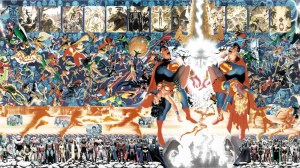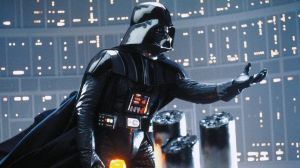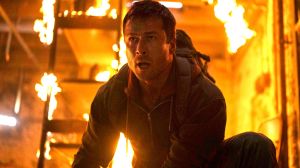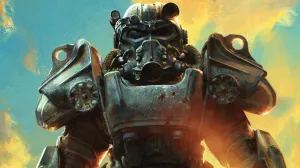DC Comics is streamlining everything for new readers, re-establishing its canon after years of reboots with the brilliant New History of the DC Universe #1. DC history can be rather confusing, and New History of the DC Universe reintroduces plenty of esoteric characters. There are some surprises for longtime DC fans — both Shining Knights are canon, the New 52 series Demon Knights has been brought back to continuity, and Icon from the Milestone Universe is now part of the history of the mainline Earth — as writer Mark Waid digs deep into the non-superhero stories of DC Comics. It takes most of the first issue before readers get into the origin of superheroes in World War II, but there’s also a huge shock at the end of book, which brings a controversial idea from Doomsday Clock into continuity.
Videos by ComicBook.com
Doomsday Clock, by Geoff Johns and Gary Frank, has gotten a lot of flack over the years. A lot of readers hate the fact that the DC Multiverse and Watchmen crossed over, and it’s definitely not a perfect story. However, there’s a lot of really cool stuff in the comic that has gotten dropped to the wayside, including the idea of the Superman Theory. New History of the DC Universe #1 takes this idea and tweaks it, all while helping lay the building blocks for Earth’s superhero community.
The Superman Theory Provided a Reason for the Proliferation of Superheroes
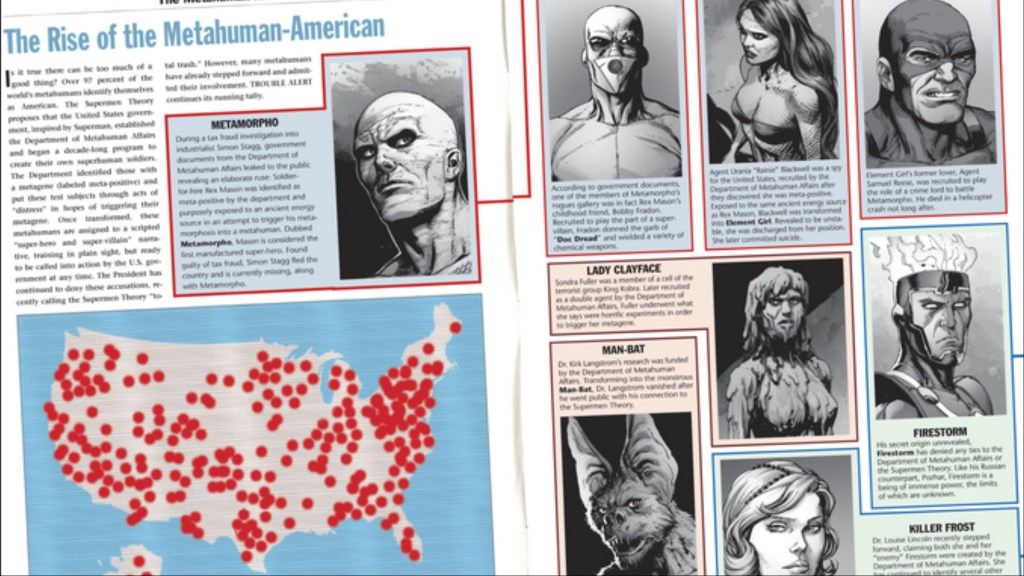
Doomsday Clock is more than just a crossover between the DC Multiverse and Watchmen, it was meant to be a turning point for the DC Universe. The book introduced an idea called the Superman Theory. It was a conspiracy theory that stated that after the debut of Superman in the public eye, the United States government began creating metahumans using science. The government agency behind this was called the Department of Metahuman Affairs, and they even created supervillains to battle the new government-created superheroes in order to give them credibility. None of these heroes had any idea that their powers came from the government, and believed that their powers came from accidents. Firestorm was the poster boy of the Superman Theory in the story, as it was revealed that Professor Martin Stein created the Firestorm matrix specifically to create a superhero. Doomsday Clock established this in the story, and then used the info pages at the end of the book to expand on the idea. The Superman Theory played a large role in the public not trusting superheroes throughout the story, and had disastrous consequences when Firestorm, angry that the world was questioning his origins, caused an international incident in Moscow. It’s an idea that feels more like it would come from the Marvel Universe, and felt like something that would become a major part of DC continuity after Doomsday Clock. However, very few of the changes the story established were used in the mainline DC Universe, mostly because the book’s delays made it impossible for the story to be as integral to DC as it was supposed to be.
Doomsday Clock is one of the bigger missed opportunities in DC history. The story was meant to be the crowning achievement of the Rebirth publishing initiative. While there are lots of fans who hate the story because they didn’t want Watchmen to have any kind of sequel or crossover with “mainstream” superheros (itself an asinine idea, as Watchmen‘s status as the greatest superhero story ever and the fact that it had a big screen adaptation make it as “mainstream” as any Superman or Batman story,) throwing away the baby with the bathwater was disappointing to the fans who did like the story. The Superman Theory was one of the more intriguing ideas in DC history. The US government in the DC Universe has its shadier dealings with the metahuman community — organizations like Checkmate, the Department of Extranormal Operations, and Amanda Waller’s Task Force X — but it was never portrayed as being as wholesale manipulative when it came to superheroes. The Superman Theory would have changed all of that; it was also cool because its status as a conspiracy theory that went large because of the Internet, something that echoes the real world in the last decade. Breaking the relationship between the general public and metahumans — unlike the Marvel Universe, the common person on DC’s Earth loves their superpowered protectors — could have led to some interesting places.
The Supermen Project Is a Rethinking of the Superman Theory

New History of the DC Universe #1 mostly deals with the pre-superhero days of the DC Universe, with only the last few pages talking about the superheroes who first appeared in the Golden Age. Superheroes were basically outlawed in the ’50s, after the Justice Society of America refused to unmask for the House Un-American Activities Committee. However, the government wasn’t willing to do away with all of the metahuman protectors completely. Instead they wanted control of them so they enlisted scientists and financiers like Niles Caulder of Doom Patrol fame, the creator of the Metal Men Will Magnus, one half of Firestorm Professor Martin Stein, and wealthy industrialist Simon Stagg to create a whole new generation of superheroes. Thus began the Supermen Project Phase One.
Now, this is slightly different from the Superman Theory in Doomsday Clock. Superman hadn’t appeared yet, so the government wasn’t trying to replicate him. It also seems like the truth of it is more widely known than the Superman Theory; New History of the DC Universe #1 is told by Barry Allen, meaning that the superheroes know about its existence, unlike Doomsday Clock. It also doesn’t feel nearly as nefarious as the Superman Theory, which fits the DC Universe that the publisher has been trying to rebuild since Dawn of DC began in 2023. It feels way more DC rather than Marvel, unlike the original idea, and it’ll be interesting to see how it develops, especially since New History of the DC Universe #1 established that it was only Phase One. What was Phase Two and will we see more?
What do you think about the Superman Theory and the Superman Project Phase One? Sound off in the comments below.

